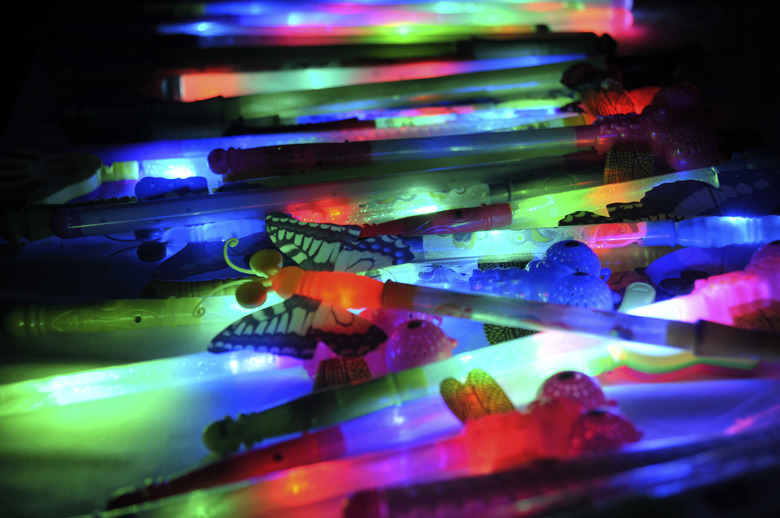How To Make A Chemical Light
Glow sticks are a fun light toy for both children and adults, and these chemical lights can actually be made at home. With the right chemicals and supplies, you can make a glowing liquid that mimics the store-bought commercial brands. You'll need a number of chemicals — the more unusual of which you'll need to find online — distilled water, glass containers and safety gloves to complete this straightforward do-it-yourself project.
Step 1
Prepare your work area by ensuring that it is well-ventilated, free of spills and away from flames. Put on your safety glasses and gloves.
Step 2
Pour 1 liter of distilled water into a glass container. Slowly add 4 grams of sodium carbonate with 0.2 gram of luminol, 0.5 gram of ammonium carbonate and 0.4 gram of copper sulfate pentahydrate.
Step 3
Mix the chemicals thoroughly, and set aside the container.
Step 4
Pour 1 liter of distilled water into a second glass container. Add 50 milliliters of 3 percent hydrogen peroxide and stir well.
Step 5
Put the contents of both containers into a third glass jar. Pour them together slowly to create a blue glowing liquid.
Things Needed
- Sodium carbonate
- Luminol
- Ammonium carbonate
- Copper sulfate pentahydrate
- Distilled water
- Hydrogen peroxide (3-percent strength)
- Clear glass containers
- Latex gloves
- Safety glasses
TL;DR (Too Long; Didn't Read)
The luminol method is a true chemical light. TCPO or bis (2,4,6-trichlorophenyl) oxalate is used to make glow sticks, and its fluorescent colored dyes are made to glow by adding energy.
Cite This Article
MLA
Mitchell, John. "How To Make A Chemical Light" sciencing.com, https://www.sciencing.com/make-chemical-light-7176452/. 24 April 2017.
APA
Mitchell, John. (2017, April 24). How To Make A Chemical Light. sciencing.com. Retrieved from https://www.sciencing.com/make-chemical-light-7176452/
Chicago
Mitchell, John. How To Make A Chemical Light last modified August 30, 2022. https://www.sciencing.com/make-chemical-light-7176452/
